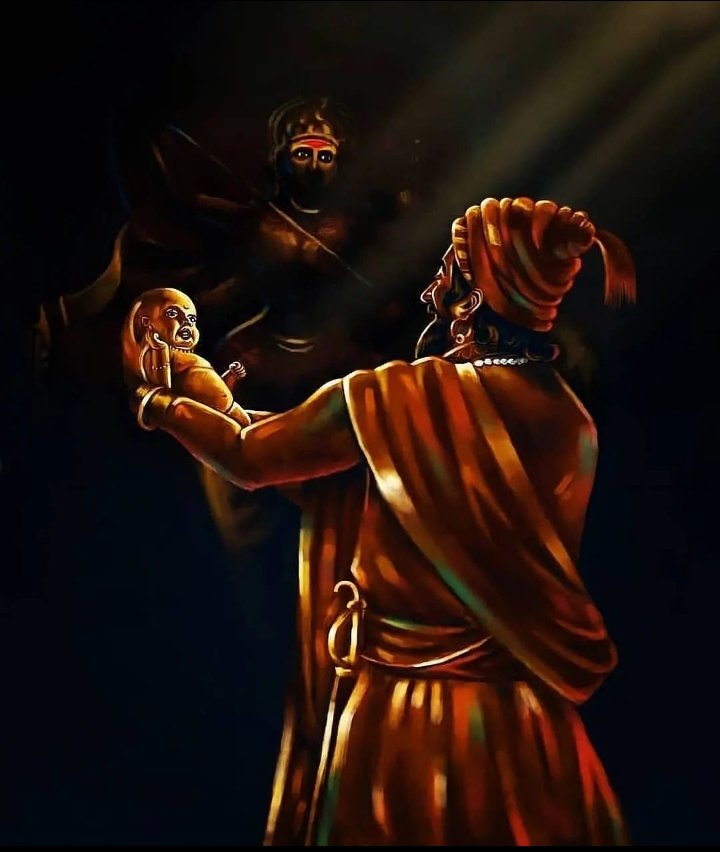How Chatrapati Sivaji Maharaj as a ruler was different from others ?


Bharat is the only civilization to resist two Abrahamic attack and the reason behind was Chatrapati Sivaji Maharaj. Chatrapati Sivaji Maharaj was indeed a Vibhuti. Today Chattrapati Shivaji Maharaj was crowned as ruler of Maratha Empire and was declared the first Chattrapati at Raigad fort in 1674. Chattrapti Shivaji Maharaj was an autocrat like any one other ruler of his time but he ensured that not all powers rested in his hands. He had a council of 8 ministers, the Ashta Pradhan who assisted and was a kind of advisory council. Ashta Pradhan comprised of Peshwa- Prime Minister, who looked after the overall welfare of the people and the state. Amatya- Finance Minister, who looked after all the public accounts of the kingdom and some districts.Mantri or Wakia Nawis- Chronicler who kept a daily account of what was happening in the court. Samant/Dabir- Foreign Secretary who advised the king on all matters of war and peace, and those relating to foreign states. Sachiv- Home Secretary, who handled the king’s correspondence, ensuring all royal orders were in proper style. Pandit Rao- Equivalent to Muhtasib, the religious head. Nyayadish-Chief Justice reponsible for civil and military justice and also Senapati- Commander in Chief who oversaw the recruitment and organization of the Army.
The kingdom was divided into 4 provinces, and there was a Viceroy in charge of each. These provinces in turn had a number of sub divisions, called pranths.Shivaji also did away with the practice of granting Jagirs to officers, and instead all were paid in cash. Even when officials had to do revenue collection, their only responsibility was collection, and beyond that they had no control over the money. Shivaji did away with the existing system of taxing the farmers, through the Zamindars or Deshmukhs. The Government would deal directly with cultivators and land was surveyed using a measuring rod called the Kathi. The state’s share was initially 30% of produce, though it was increased to 40% later on. The farmer could pay the amount either in cash or kind. Similiarly for territories occupied by Shivaji, outside the Maratha region, two taxes were levied, Chauth which was 1/4th of the territory’s income, and Sardeshmukhi which was an additional 10% levy on the chauth, as a tribute to the ruler. During times of famine, the Govt paid money or grain in advance to cultivators, that could be paid back later in installments. Revenue collection was strictly carried out, leaving no scope for discretion or favoritism.The army was constituted into units, and grades were given regularly. Each unit consisting of 25 troopers reported to a Havaldar, who in turn reported a Jumladar, and there was a chain of command, Jumladar- Hazari-Sari Naubat. The forts had the Havaldar, Sabnis overseeing them.Women, female slaves, dancing girls were not permitted into the army, to maintain discipline of ranks. Even during military campaigns, ground rules were laid down, women, children, elderly and infirm people would not be harassed. No women of the enemy would be taken as slaves, and if captured, she would be sent back with due respect. When Shivaji was born,the Moghol empire was at its peak.When he died, at tender age of 52, it had started to crumble, never to recover.
Credit – Sadaa Shree
DISCLAIMER: The author is solely responsible for the views expressed in this article. The author carries the responsibility for citing and/or licensing of images utilized within the text.
